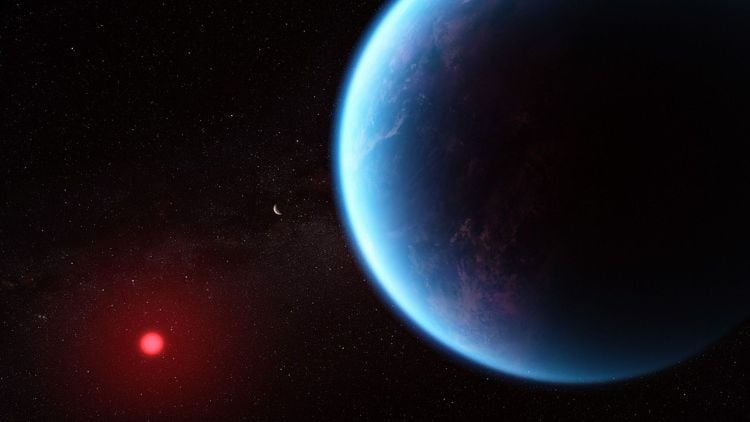Researchers Uncover Key Reactions for Water Formation on Exoplanets

A recent study published in the journal Nature sheds light on how water forms on exoplanets, offering new insights into conditions that may support life beyond Earth. An international team of scientists conducted laboratory experiments to investigate the processes that enable exoplanets to produce liquid water, potentially identifying viable targets for future astrobiology research.
The researchers employed a diamond anvil cell and a powerful laser to simulate extreme conditions akin to those found on distant planets. They subjected samples to temperatures of 4000 K (approximately 3,727 degrees Celsius) and pressures ranging from 16 to 60 gigapascals (GPa). These conditions were designed to mimic the interactions between hydrogen-rich atmospheres and iron-rich magma oceans, which are believed to be present on some exoplanets.
The findings revealed that magma oceans rich in hydrogen, combined with the reduction of iron oxide, can lead to significant water production. According to Dr. Anat Shahar, a Staff Scientist and Deputy for Research Advancement at the Carnegie Institution for Science and co-author of the study, “The presence of liquid water is considered critical for planetary habitability. This work demonstrates that large quantities of water are created as a natural consequence of planet formation.”
Understanding Sub-Neptunes and Their Potential for Life
The exoplanets most relevant to this study are classified as sub-Neptunes. These planets have masses between Earth and Neptune, featuring rocky interiors similar to Earth and hydrogen-heavy atmospheres akin to Neptune. Approximately 1,000 sub-Neptunes have been identified among over 6,000 confirmed exoplanets.
Some sub-Neptunes, often referred to as super-Earths, lean more towards Earth in terms of mass and radius. Notable examples include K2-18 b, Kepler-138 d, and TOI-270 d, which are located approximately 124 light-years, 218 light-years, and 73 light-years from Earth, respectively. All of these planets orbit M-dwarf stars, which are smaller and cooler than our Sun, resulting in smaller habitable zones. Notably, M-dwarf stars can have lifetimes estimated in the trillions of years, significantly longer than the 10 billion years expected for our Sun.
While astronomers have traditionally sought exoplanets that closely resemble Earth, this study emphasizes the importance of considering diverse planetary types. The results suggest that conditions supporting life could exist on planets that do not mirror our own solar system.
The Implications for Future Research
The implications of this research extend beyond just understanding water formation. It challenges previous notions about the prevalence of water on exoplanets and suggests that, under certain conditions, water might be more common than previously believed. This aligns with existing models regarding planetary formation and evolution, reinforcing the idea that exotic worlds could harbor the necessary conditions for life as we know it—or potentially life forms that differ from our understanding.
As research continues, scientists are eager to explore new insights into how exoplanets produce water and what this means for the search for extraterrestrial life. The study represents a significant advancement in astrobiology, indicating that humanity’s quest to find life beyond Earth might encompass a broader array of planetary environments than once thought.
As we continue to look to the stars, the importance of understanding these processes remains paramount, paving the way for future explorations in the vast expanse of our universe.






